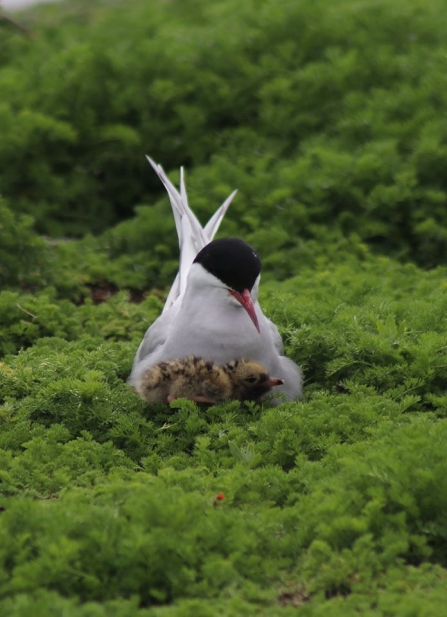Cemlyn Lifeboat for Lighthouse terns
In answer to the question ‘Where have all the Skerries birds gone?’ We are very happy to report that approximately half these have come to Cemlyn – the closest alternative breeding habitat to the Skerries. Last year we had just 25 pairs Arctic and 10 pairs of common terns breeding at Cemlyn. This year the current figures are over 750 pairs of Arctic and at least 250 pairs of common tern, plus hundreds of loafing birds. A total of at least 2300 birds! We have also had sightings of Roseate tern, which like to nest alongside common terns and have similar habitat requirements. All this alongside what we think is now in excess of 2000 Sandwich tern nests.
The two low lying islands in the Cemlyn lagoon are currently looking ‘full’ and it is a truly awesome spectacle of a full-on breeding tern colony with chicks and activity happening at full pelt with constant movement and noise. The influx of these additional birds coincided with the abandonment of the Skerries colony. This circumstantial evidence that at least half of the Skerries birds have come to Cemlyn is borne out by the concrete evidence provided by reading the colour rings tagged on the legs of some of the Arctic and common terns recorded at Cemlyn by our wardens. At least 10 of these ring records confirm that these are indeed Skerries birds.



